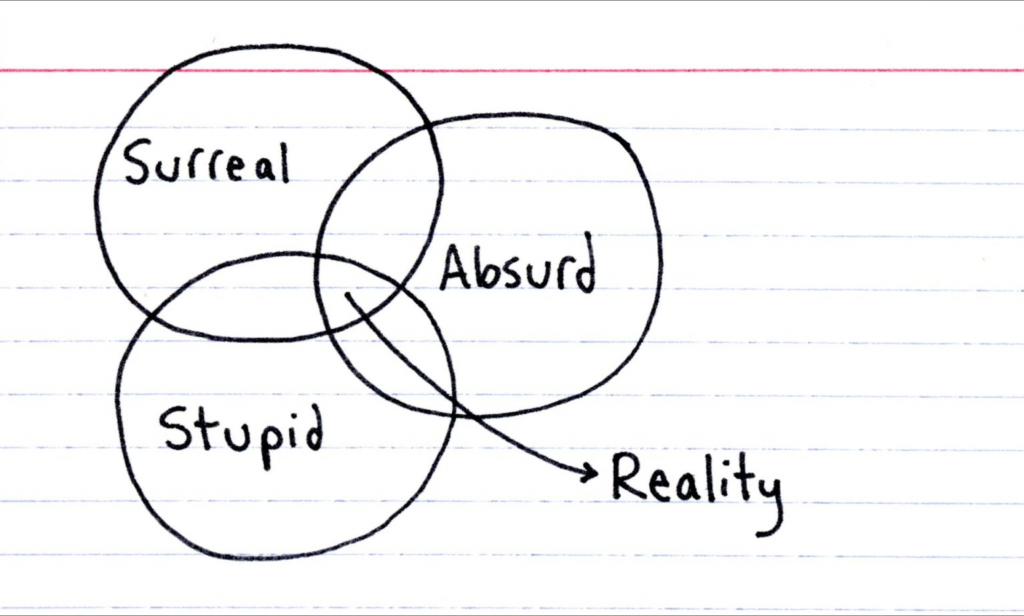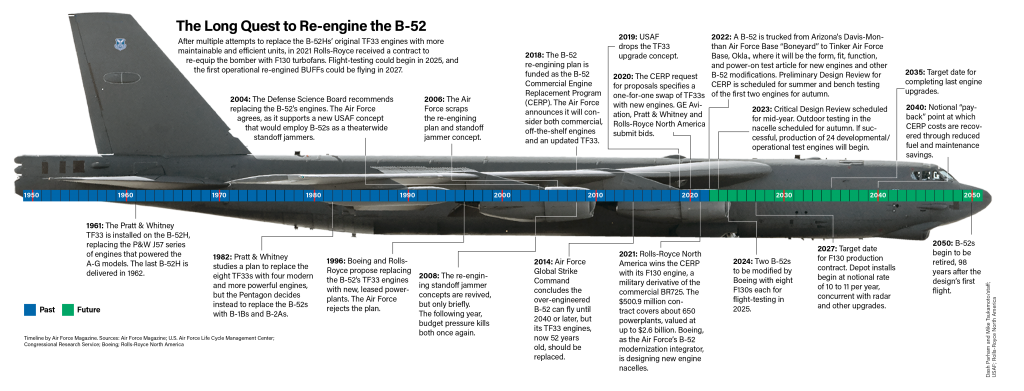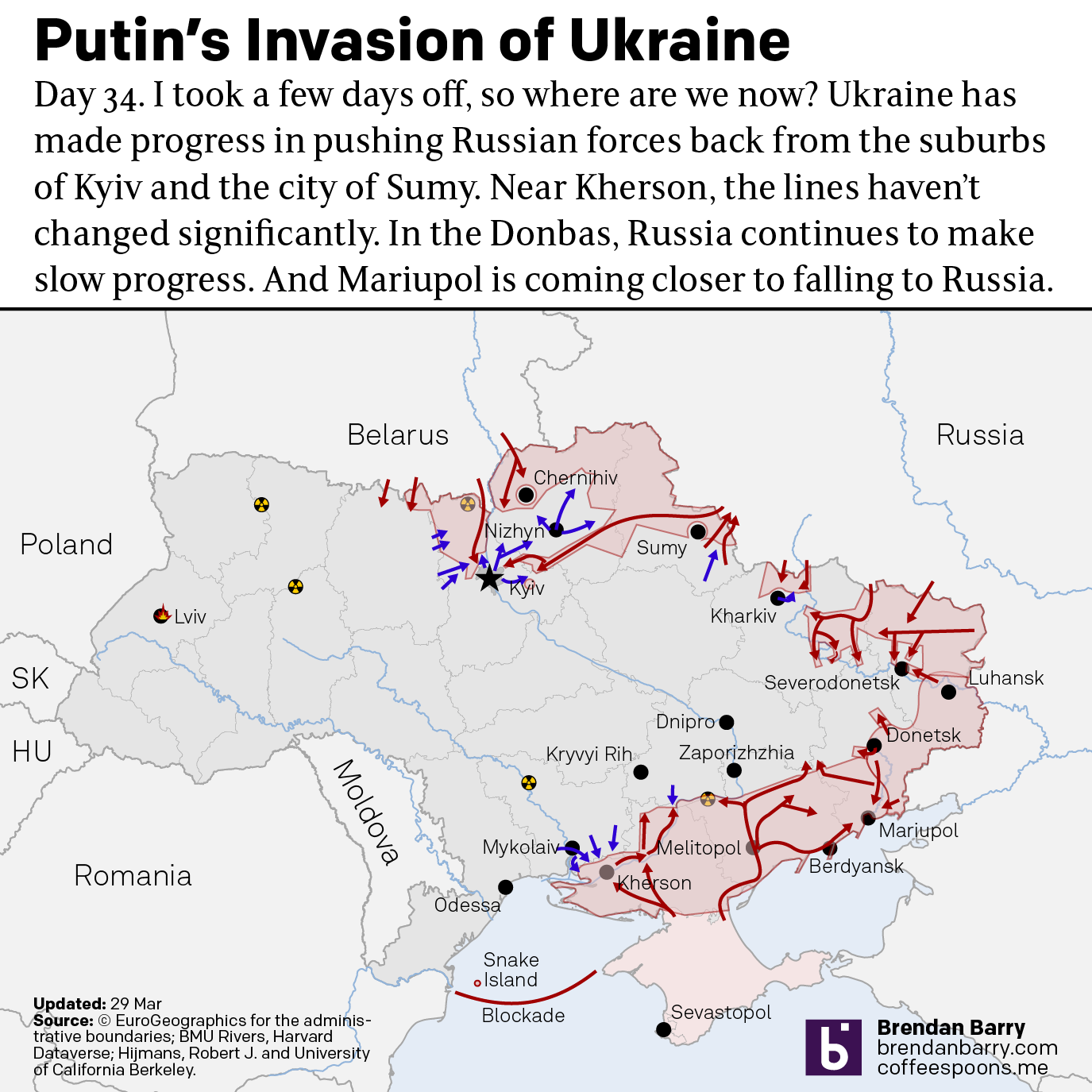It’s been another week. And that’s why I thought of this post from Indexed last week. It seems to adequately describe where are at in this crazy world.
But we all made it, so happy weekend, everyone.

Credit for the piece goes to Jessica Hagy.
Another week, more combat and refugees in Ukraine. I’m going to try and hold the war update until tomorrow pending some news that hasn’t been confirmed yet: the fall of Mariupol. Instead, we’re going to again look briefly at the refugee situation in Ukraine—technically outside. I haven’t seen a recent number on the internally displaced, though we have begun to see some people return to Ukraine especially in the north and around Kyiv. It’s unclear to me if the data includes those people returning.
Regardless, we are at over 4.6 million Ukrainians who have fled Ukraine.

The question now is as Russia refocuses its effort now on the Donbas—though fierce fighting has been waged in the area for eight years now—will these numbers begin to see a notable change.
Credit for the piece is mine.
Not the band, but the long-range strategic bomber employed by the United States Air Force. This isn’t strictly related to Ukraine, but it’s military adjacent if you will.
I thought about creating a graphic a few years ago to celebrate the longevity of the B-52 Stratofortress, more commonly called the BUFF, Big Ugly Fat Fucker. Obviously I did not, but over at Air Force Magazine, they created a graphic timeline showing the history of the aircraft, specifically as it relates to its engines, which will now be replaced in an effort to extend the life of the bombers.

I don’t love the image of the bomber behind the graphic, but I understand why it’s there given the B-52 is the focus of the timeline. I wonder if a different layout could have highlighted the placement of the engines and separated the timeline from the image of the bomber.
Overall I like the graphic, but it could just be that right now I’m spotlighting and working on a lot of graphics dealing with military issues and Ukraine in particular.
Credit for the piece goes to Dash Parham and Mike Tsukamoto.
As Russia redeploys its forces in and around Ukraine, you can expect to hear more about how they are attempting to reconstitute their battalion tactical groups. But what exactly is a battalion tactical group?
Recently in Russia, the army has been reorganised increasingly away from regiments and divisions and towards smaller, more integrated units that theoretically can operate more independently: battalion tactical groups. They typically comprise less than a thousand soldiers, about 200 of which are infantry. But they also include a number of tanks, infantry fighting vehicles (IFVs), armoured personnel carriers (APCs), artillery, and other support units.
In an article from two weeks ago, the Washington Post explained why the Russian army had stalled out in Ukraine. And as part of that, they explained what a battalion tactical group is with a nice illustration.

Russia’s problem is that in the first month of the war, Ukrainian anti-armour weapons like US-made Javelins and UK-made NLAWs have ripped apart Russian tanks, IFVs, and APCs. Atop that, Ukrainian drones and artillery took out more armour. The units that Russia withdrew from Ukraine now have to be rebuilt and resupplied. Once fresh, Russia can deploy these into the Donbas and southern Ukraine.
This graphic isn’t terribly complicated, but the nice illustrations go a long way to showing what comprises a battalion tactical group. And when you see photos of five or six tanks destroyed along the side of a Ukrainian road, you now understand that constitutes half of a typical unit’s available armour. In other words, a big deal.
I expect to hear more out of Russia and Ukraine in coming days about how Russia is providing new vehicles and fresh soldiers to resupply exhausted units.
Credit for the piece goes to Bonnie Berkowitz and Artur Galocha.
It’s been a week since my last update and that’s in part because a lot has changed. When we last spoke, the Russians had announced they had successfully completed the first phase of the “special military operation”.
They didn’t.
Instead, Russian forces have completed a full-on retreat from northern Ukraine, sending troops and equipment back to Belarus and western Russia for refit, repair, and resupply. These are then likely to head south towards the Donbas and eastern Ukraine, the new focus of the war.
That area, in particular the south, has been Russia’s lone area of success in this war and it makes sense for Russia to reinforce its success and take the loss in the north where it was in fact losing. In fact, during the Russian retreat we saw continued, limited gains in the Donbas and the south. There, Russia appears desirous to envelop Ukrainian forces and cut them off from resupply, especially in the area of Kramatorsk.
For those that recall my coverage back in 2014, get ready to start hearing the same cities and towns mentioned all over again.

Russia wanted to capture Kyiv and cities in the north to topple the Ukrainian government. But militarily, offensive operations in the north prevented Ukraine from reinforcing their units in the south. Since 2014, Ukraine has been conducting the Joint Forces Operation (JFO) in the Donbas. These are the best-equipped and most-experienced Ukrainian troops int he war as they’ve been fighting the Russians and Russian-backed separatists for eight years. I suspect that Ukraine’s success thus far is in no small part due to the knowledge Ukraine has gained about how to fight Russian units and counter Russian tactics in this very theatre. In other words, Russia needed to prevent these forces from being resupplied. With Russia’s retreat, this is an option.
That isn’t to say Ukraine can send its whole army south, because I imagine some Russian troops will remain on the Russian side of the border north of Kyiv just in case a moment of opportunity arises.
So if Russia cannot stop Ukrainian reinforcements by pinning or fixing Ukrainian units to the north, Russia needs to cut off routes of resupply. Not surprisingly then, we’ve been seeing increased numbers of operations to take cities and towns that serve as vital rail and road hubs. And further away from the battlefield, Russian artillery and cruise missiles have been relentlessly striking similar towns in attempts to destroy transport infrastructure.
For now, it seems as if Russian forces continue to probe Ukrainian defences in an attempt to find a weak point in their lines that they can then exploit through an artillery barrage and likely an armour and mechanised infantry blitz. What works for Ukraine is that despite being surrounded on three sides, that makes it easier to shuffle units and supplies between forces facing the most pressure. Russia, on the other hand, has to move its reinforcements along the entire circumference of that bubble.
Ukraine obviously wants to retake all the territory lost to Russia thus far. In the southwest, we have seen some successful operations in repulsing the Russians around Mykolaiv and pushing Russian forces back to the outskirts of Kherson. Kherson and Nova Kakhovka control the only two southern bridges across the Dnieper. Russia needs to defend these in order to keep Ukraine from attacking its units in the south from the rear so to speak. Russian units are holding in the cities thus far despite enormous pressure.
Russia still controls the vital rail lines leading up from Crimea that allows them to keep Russian forces in that theatre resupplied. The lack of resupply was one of the issues in the north, but Russian infrastructure is better in the south and east and that could present an obstacle to Ukrainian counteroffensive operations.
Finally we have the city of Mariupol, which remains under siege. Russian units continue to make bloody but slow and steady progress into the city. What’s fascinating are reports of Ukrainian units being resupplied despite the siege. And that may explain Russian attacks on civilian convoys, because with no air, rail, or sea transport links into the city, the only way Ukraine must be able to resupply its units is under the guise of civilian lorries or cars. And if Ukrainians are using civilian vehicles to resupply their military forces, that could open civilian vehicles to being sometimes legitimate targets.
So long as Russia continues to control broad swathes of territory surrounding the city, I think it’s a matter of time until Mariupol falls. But the longer the city holds out, the fewer combat effective troops Russia will later have to reorganise for a push north into Zaporizhzhia oblast and the Donbas, which is ideal for Ukraine.
I don’t think I’m going to touch on the atrocities we’re seeing coming out of northern Ukraine in this post. But I will say that the visuals we’re seeing confirm some of the worst reports and rumours that had been circulating on the internets over the last few weeks.
Credit for the piece is mine.
Just a quick update as I try to update my battle map. Today we’re taking another look at the refugee crisis Putin created in eastern and central Europe. Over four million Ukrainians have left Ukraine and millions more have been displaced internally within Ukraine.
Whilst we may hope they will eventually return home, the photos and videos we are seeing of Ukrainian areas that had been captured by Russian forces show that many Ukrainians no longer have homes or even villages to which they can return.
This problem will persist for years as Ukraine tries to rebuild. And that doesn’t include the fact that much of southern and parts of eastern Ukraine remain under Russian control. And some of those areas continue to see fierce fighting.

Credit for the piece is mine.
I took a few days off from covering the war in Ukraine. Now it’s time to jump back in and catch up on things.
Putin and his generals have declared the first phase of his “special military operation” over and that it was a success. They claimed that their goal was never the capture of Kyiv or other major cities in the north and east. Rather, those were all feints or diversions to prevent Ukraine from reinforcing their units in the Donbas as Russia “liberates” those regions.
Of course, I believe very little of that. There is a value in “pinning” or “fixing” an enemy’s forces in place so they cannot reinforce them somewhere else. To an extent, Russian and Belarusian forces have been doing this in western Ukraine. There they remain just north of the border without having crossed it. This keeps Ukrainian forces in place to defend against a new axis of Russian invasion.
I would argue that if Putin really wanted to keep the Ukrainian units around Kyiv fixed in that area of operations, he could have done so with fewer units and with a different strategy that would have cost far fewer lives and far fewer military assets. And the same can be said for Chernihiv, Sumy, and Kharkiv.
Rather, we are seeing successful small-scale Ukrainian counterattacks across the country.

You can see how around Kyiv, Ukrainian forces have retaken several suburbs, including Irpin, the focus of weeks of fierce fighting between Russian and Ukrainian soldiers. Whilst Russian forces have been pushed back and Ukraine has liberated the city, Russia continues to heavily shell the area.
Another big change on this map from last week is the Russian advances especially south and east of Sumy. That city had been effectively isolated, but Russia has withdrawn some of its forces and looks to be sending them south of Kharkiv on the push towards and south from Izyum. Ukraine has been following the withdrawing troops and liberating towns and, crucially, reopening those supply lines into Sumy. Russian losses? They appear to be heavy. But, Russia is not abandoning the front entirely, instead they are fortifying their positions.
Another area of Ukrainian success is in the south. They’ve driven Russia from the outskirts of Mykolaiv back to near the city limits of Kherson. There’s been some evidence that Ukrainians are also pushing south from north of the city along the western bank of the Dnieper, though Kherson itself remains in Russian hands. Critically, Russia still holds the two bridges that cross the Dnieper south of Zaporizhzhia.
West of Kherson and south of Kharkiv, however, Russia has been having slow but costly successes. In Mariupol, Russia’s bloody siege continues with the town resembling 1990s Grozny more and more day by day. On the streets, Russian forces continue to take more of the city block by block in bloody, house-to-house combat. The question in Mariupol will be how many Russian forces remain intact, or combat effective, when—it no longer appears to be an if—the city falls to Russian forces? If Russia has sufficient numbers of combat effective troops to garrison the city and reinforce forces north of the city, Russia could push further into Donetsk oblast and try to take more of the Donbas. But if the losses are too heavy, Russia would be forced to only garrison the city.
Northeast of Mariupol, the Russians continue their pincer movement heading west from Luhansk towards Severodonetsk and other points. Meanwhile troops from the region of Kharkiv have been making painful progress, albeit progress, south. These are the units trying to take the city of Izyum. At the moment it appears there are perhaps three different sub-axes of advance, with Russia likely probing to find weaknesses in Ukraine’s defences in that area of operations.
And in the air, Russian artillery shells and multiple-launch rockets continue to rain down upon Russian cities. Yesterday, Russia sent a cruise missile into the state government building in Mykolaiv, killing at least 12 people. Russia uses long-range standoff weapons to hit targets in western Ukraine as well as in Kyiv.
Finally, to end on a positive note.
You may recall the story of “Russian warship, go fuck yourself”. 13 Ukrainian soldiers “died” defending Snake Island. Well, it turned out they surrendered after they ran out of ammunition and Russian forces took them to Crimea as prisoners of war. They were then exchanged for a similar number of Russian prisoners of war. And yesterday one of those Snake Island defenders was given a medal for the defence of the island.
This data took far longer to clean up than it should have. And for that reason I’m going to have to keep the text here relatively short.
We still see tens of thousands of refugees fleeing Putin’s war in Ukraine. Although, we are down from the peaks early on in this war. In total, nearly four million have fled their homes for safety abroad. This does not include those people internally displaced. I’ve seen estimates that including those people, the number may be closer to ten million.
Keep in mind that Ukraine’s pre-war population was about 44 million. In other words, almost 1 in 10 people have left the country and 1 in 4 have fled their home for somewhere else. Given that most men are prohibited from fleeing the country, we also know that half of all Ukrainian children have fled their homes.

Credit for the piece is mine.